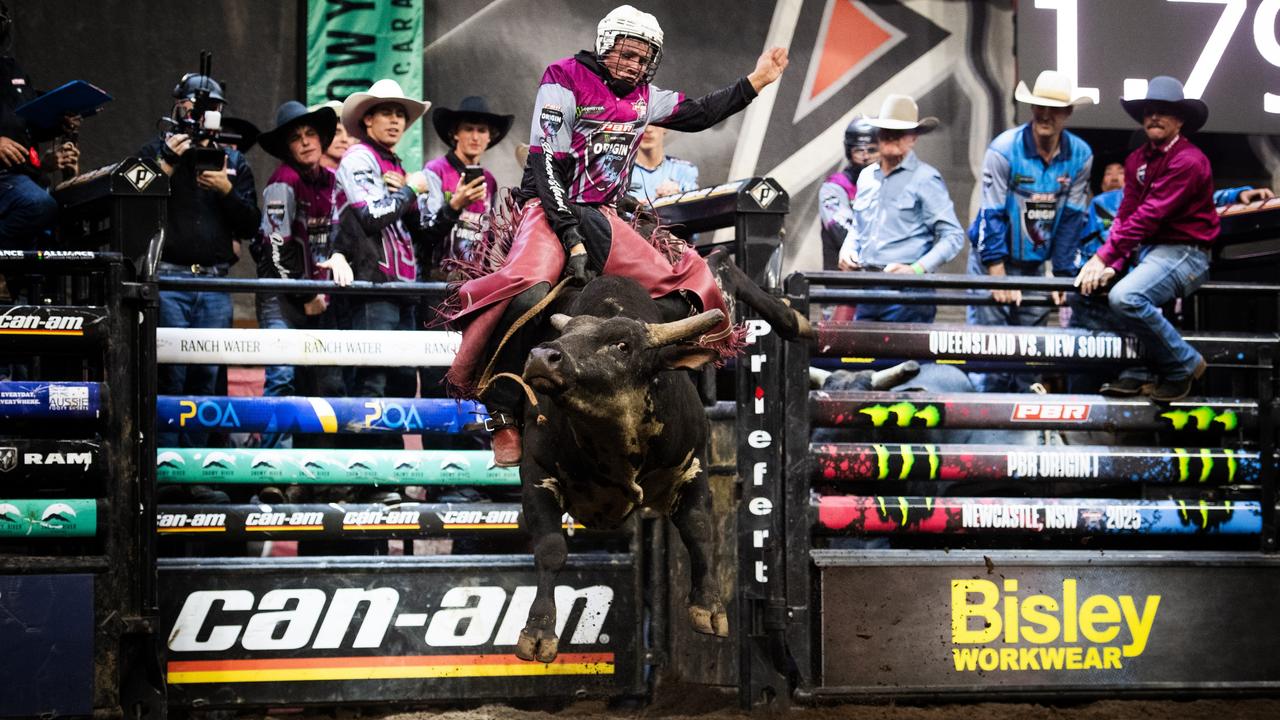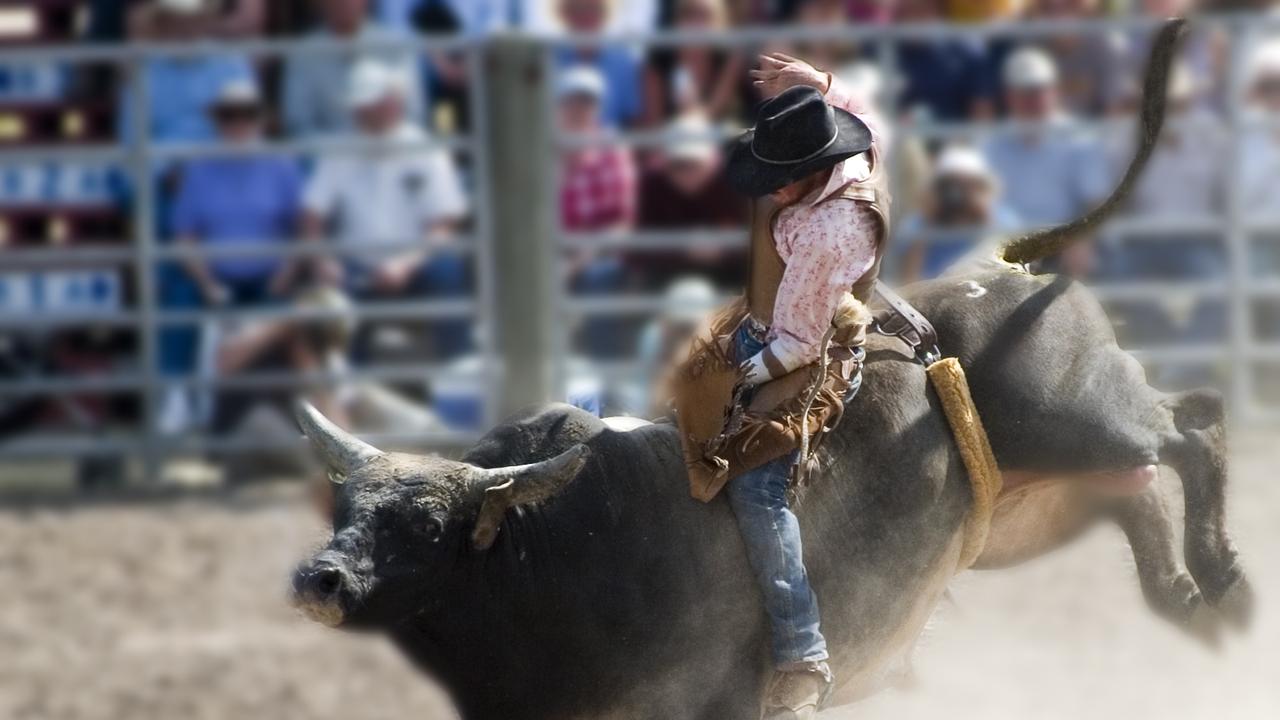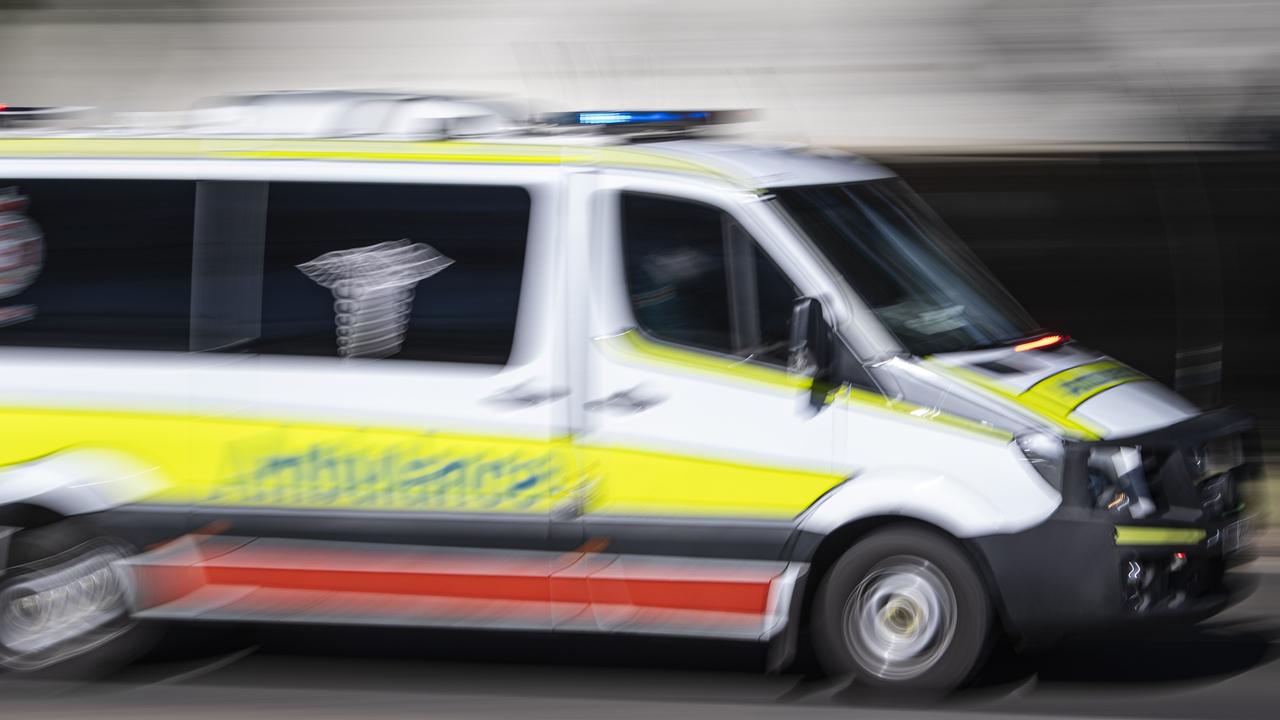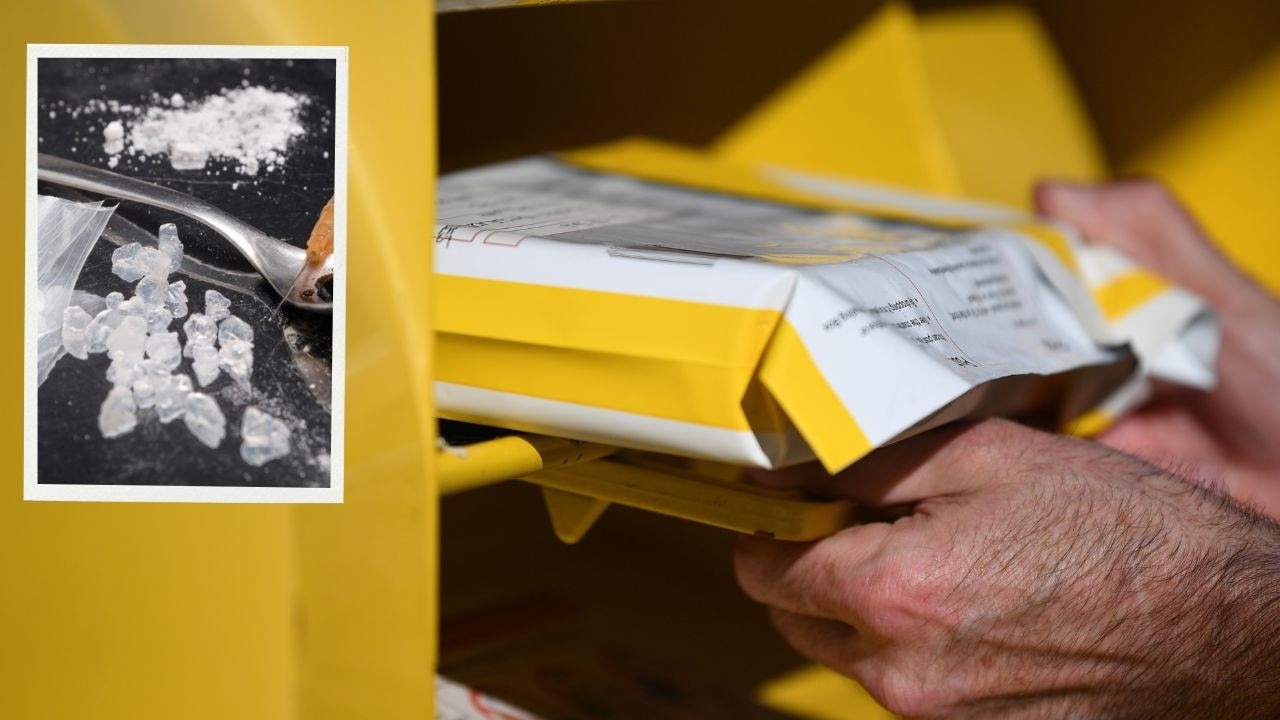Daniel Patrick Lewis, 36, inquest: Why he was shot by police at Rockhampton home
Daniel Lewis threatened to kill his partner and her children and burn the house down after buying eight cans of bourbon. His partner tried to calm him down but saw ‘pure rage’ on his face. Within hours, Lewis would be dead.
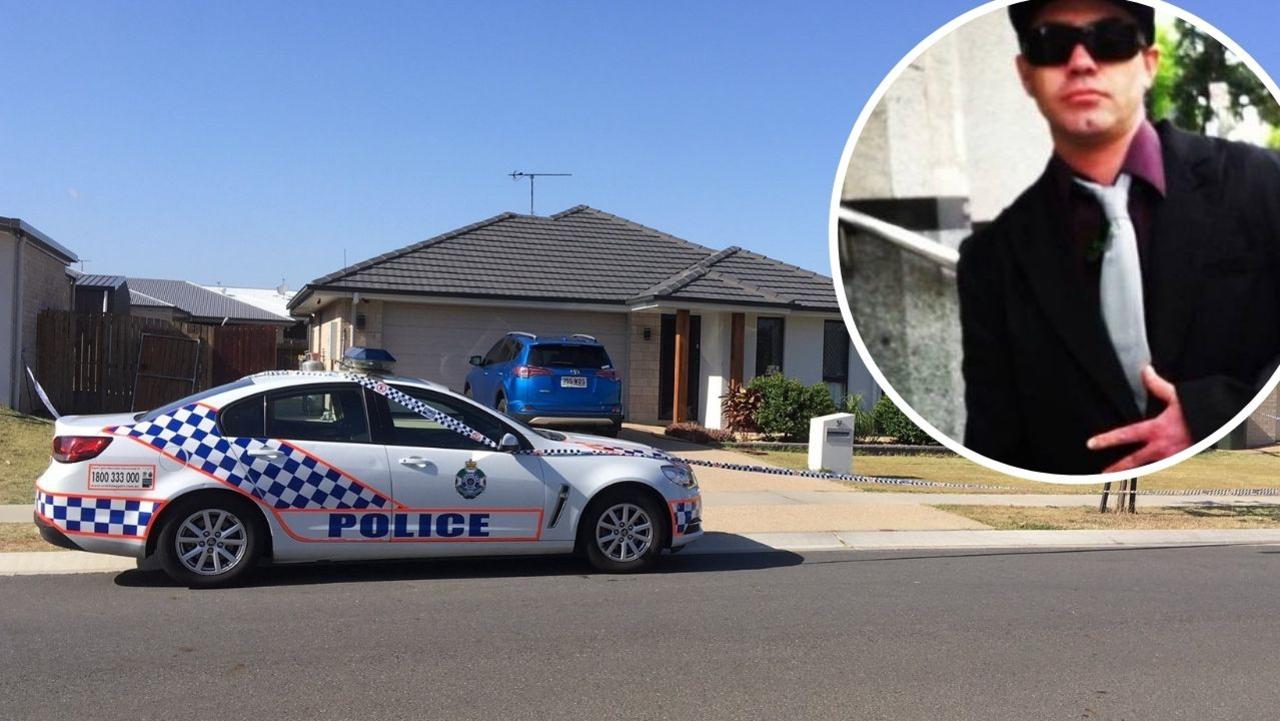
Rockhampton
Don't miss out on the headlines from Rockhampton. Followed categories will be added to My News.
Lying on the ground after he had been shot twice by police at a Rockhampton home, Daniel Patrick Lewis pleaded with police to “just let him die”.
It was another 32 minutes before the 36-year-old New Zealand man succumbed to the gunshot wounds in his chest and abdomen, despite the best efforts of emergency services personnel administering CPR.
A glimpse into what was Mr Lewis’ troubled life shows he began taking drugs at the age of 11, had been in and out of jail and battled mental health issues up until his death.
In the lead up to the fatal day on August 31, 2018, Mr Lewis’ mental health had been deteriorating and he was prescribed medication just three days beforehand.
On the day he was killed, he had been drinking bourbon all afternoon at his partner’s house and started arguing with her, and said he was “useless” and “would be better off dead”.
His mood then flipped to “pure rage” and he started threatening family members and attacked them, prompting the police to be called.
Police officers were stationed at the front and rear of the house when Mr Lewis threw a knife at an officer in the backyard.
As Mr Lewis was still armed with more knives, a police officer shot Mr Lewis in self defence.
Details of what happened in the fatal incident can been revealed for the first time after an inquest into his death was finalised more than three years on.
Coroner Terry Ryan handed down his findings at the Brisbane Coroners Court on January 18, declaring the police officers involved had acted appropriately and no recommendations were required.
DANIEL LEWIS’ LIFE HISTORY
The findings described Mr Lewis’s life and the events that led up to the shooting.
Mr Lewis was born in New Zealand and was one of three children, mostly raised by his single mother.
At the age of 11, Mr Lewis suffered a “massive bleed to his brain” during a fight with his brother.
He had cranial surgery and sustained temporal and frontal lobe damage.
The injury would affect the rest of his life as his mother reported “he had no consequential thinking because of his brain bleed” and his behaviour changed afterwards.
He became violent and at one point poured boiling water over his younger brother.
Mr Lewis left school in year eight.
He went on to have three children to two different partners and a fourth child who died from a sudden unexplained death as an infant.
CRIMINAL HISTORY
He had a criminal history in New Zealand, for stealing property, assault and possession of a pipe.
He moved to Melbourne in 2003 when he was 22 to live with his father.
Between 2009 and 2012, he was charged for criminal offences of violence, resisting police, property related offences, possession of a weapon, possession of methylamphetamine and using an unregistered vehicle.
In 2012, he was sentenced to a non-parole period of jail time for one year and nine months for one count of intentionally causing serious injury and one count of resisting police.
In 2014, he was sentenced to serve six months for one charge of robbery, unlawful assault, criminal damage and intentionally causing injury.
MENTAL HEALTH ISSUES
After he was released from prison in 2015, he moved to Comet near Emerald to live with his mother and later moved to Rockhampton in 2018.
His mother helped him address his mental health issues, he was referred to a psychiatrist in 2016 and was diagnosed with PTSD, depression and anxiety.
At the time, he reported having flashbacks of his rough past, being in prison, having many fights and being beaten by a gang on many occasions.
In 2017, his mother took him to the ED at Emerald Hospital for injecting ice and he went back to hospital again a week later when he voluntarily admitted to the Mental Health Inpatient Unit at the Rockhampton Hospital.
He was at the hospital for 13 days and was said to be co-operative while in hospital and engaged well with staff.
On his discharge, he was diagnosed with severe alcohol, cannabis, methamphetamine and nicotine substance use disorder and was encouraged to seek treatment.
He was in and out of Emerald and Rockhampton hospitals throughout 2018 and in March, reported he stopped taking his medication because it was making him angry and he had been charged for assaulting police and drinking driving
He said he replaced his ice addiction with alcohol.
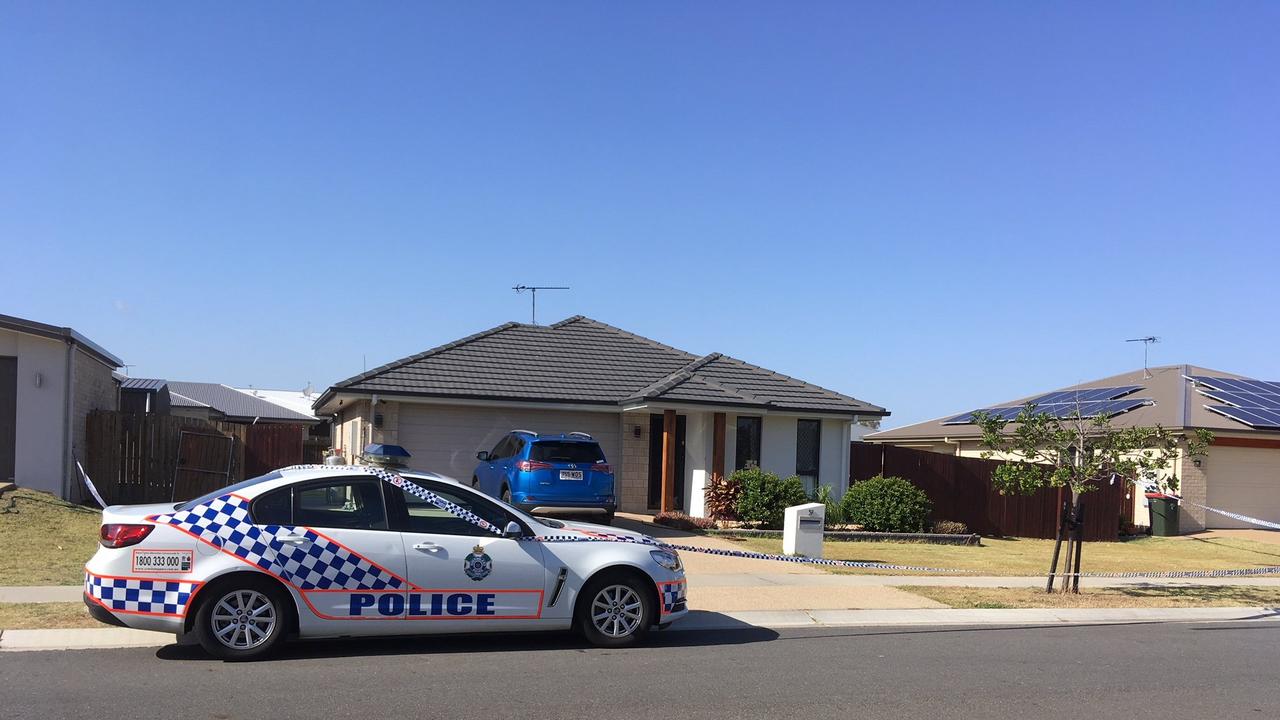
On March 17, 2018, he was pulled over by police after he was seen driving erratically on Glenmore Road, Rockhampton.
He was seen stumbling out of his car and refused to do a breath test twice, argued with police, kicked an officer and spat on another.
He was due to face Rockhampton Magistrates Court for these charges a week after he died.
He was still seeing doctors for help with his drug addictions and paranoid episodes.
The day before his death, he told his doctor he smoked ice two weeks prior and had been smoking cannabis daily.
THE RELATIONSHIP WITH THE PARTNER
The fatal shooting occurred at his partner‘s house, who he had met through an online dating site 14 weeks earlier.
She described their relationship as “really good” and he spent a lot of time at her house with her son and daughter, but he would drink alcohol “excessively” and smoked “10-15 cones” of cannabis a day.
She said he had never been physically violent towards her until the night of his death.
On the morning of the incident, Mr Lewis told his partner he was feeling numb and repeatedly asked if she would come to his funeral.
She thought he was feeling this way because Father’s Day was coming up and he did not have much to do with his children.
He was also worried about his upcoming court date and thought he would be going to jail.
THE AFTERNOON OF THE SHOOTING
Around 3pm, the pair returned home from the shops where Mr Lewis had bought eight cans of bourbon.
His partner wasn’t feeling well and had a nap and when she woke up there was homebrew on the kitchen bench and Mr Lewis was drunk and stumbling.
She said he was “off” and would argue with her one minute and then wanted to cuddle the next minute.
The partner talked to Mr Lewis’ mother on the phone around 6pm and he could be heard in the background saying he was “useless, was not worth anything to anyone and would be better off dead”.
He then threatened to kill the partner and her children and burn the house down.
The partner tried to calm him down but saw “pure rage” on his face and felt scared.
He grabbed a family member by the throat and pushed them against the wall.
The partner’s son, 19, and Mr Lewis began punching and scuffling.
He threw the son over the kitchen bench, causing glasses to smash and knives to scatter.
The partner and son managed to drag him to the couch and tried to hold him down but he kept repeating he was going to kill the son, was threatening him with a knife and starting breaking items in the house.
The partner told her son to get out of the house and he ran out, followed soon after by the partner and her eight year old daughter.
POLICE CALLED TO THE SCENE
As the family stood outside they could hear Mr Lewis smashing items and furniture and the son used a neighbours mobile to call 000 just after 7pm.
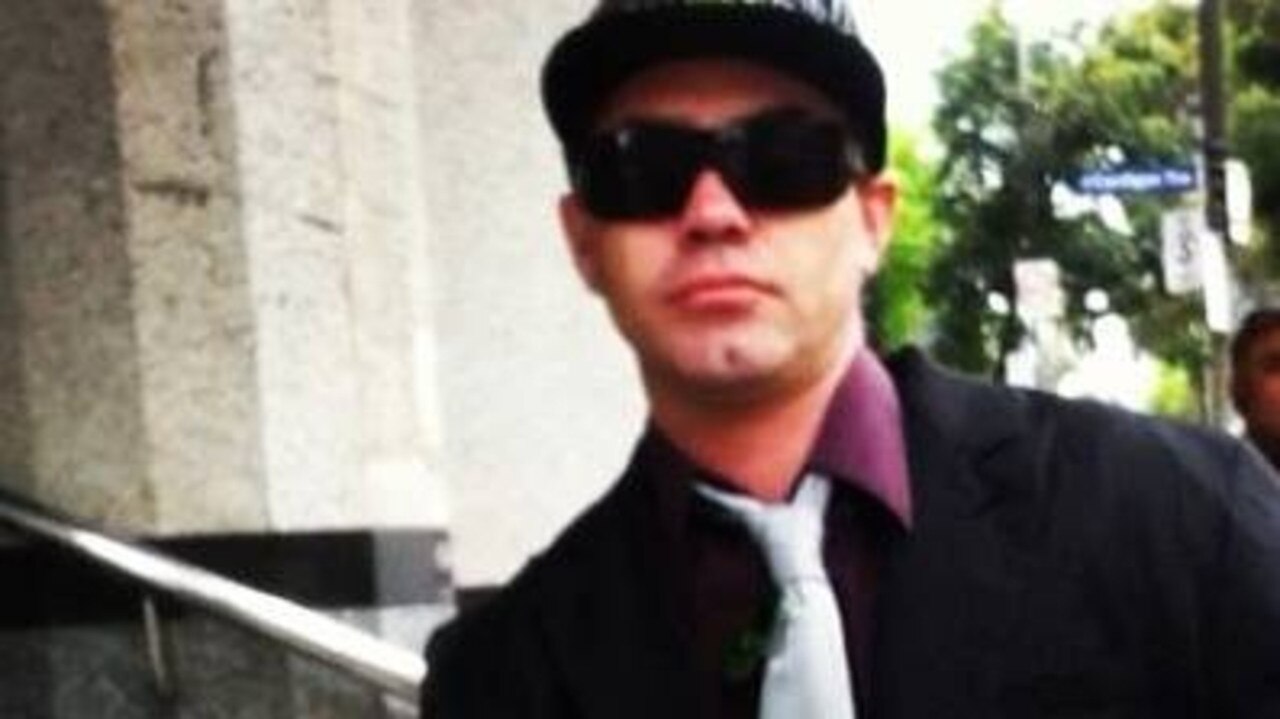
He told the call taker Mr Lewis had hit his mother, gone ‘ape’ and chased him outside.
At 7.21pm, Senior Constable Grant Wynne-Jones and Constable Megan Lyons arrived at the address and were warned he was armed and alone in the house.
Senior Constable Wynne-Jones was by the slightly ajar garage roller door when he heard what sounded like a taser.
At 7.23pm, Constables Matt Dominick and Jack Ziemins-Hill arrived at the scene and were tasked to cover the back of the house and climbed over the fence to do so.
The police officers called out to Mr Lewis and announced the police presence and that they wanted to check he was alright.
More police officers arrived on scene, including the dog squad.
There was no response from Mr Lewis and police officer’s discussed he may have left the house.
Police had been on the scene for five minutes before Mr Lewis replied, yelling “I’ve got a shotgun loaded”.
The two police officers in the back took cover.
Constable Ziemins-Hill told the inquest it was not not safe to retreat over the front fence as they would need to pass a large open window that had been smashed by Mr Lewis.
There was adequate cover in the backyard and they could see he was not in possession of a shotgun or any other weapons.
Mr Lewis was inside the house and yelled something about having enough and pushing a button and “you’d all be gone”.
Police officers told him to come outside and put up his hands.
Mr Lewis walked out again swearing under his breath and then went to rummage through a kitchen drawer.
Police spoke with the partner and determined he had no access to firearms as there were none in the house.
THE SHOOTING
Mr Lewis came out an unexpected back door and walked towards Constable Dominick, holding three knives.
Constable Dominick yelled “mate taser, this is a taser get on the ground, this is a taser get on the ground”.
Constable Ziemins-Hill, who was around the corner, came running around and saw Mr Lewis.
Constable Dominick told Constable Ziemins-Hill “Mate Jack he’s got a knife”.
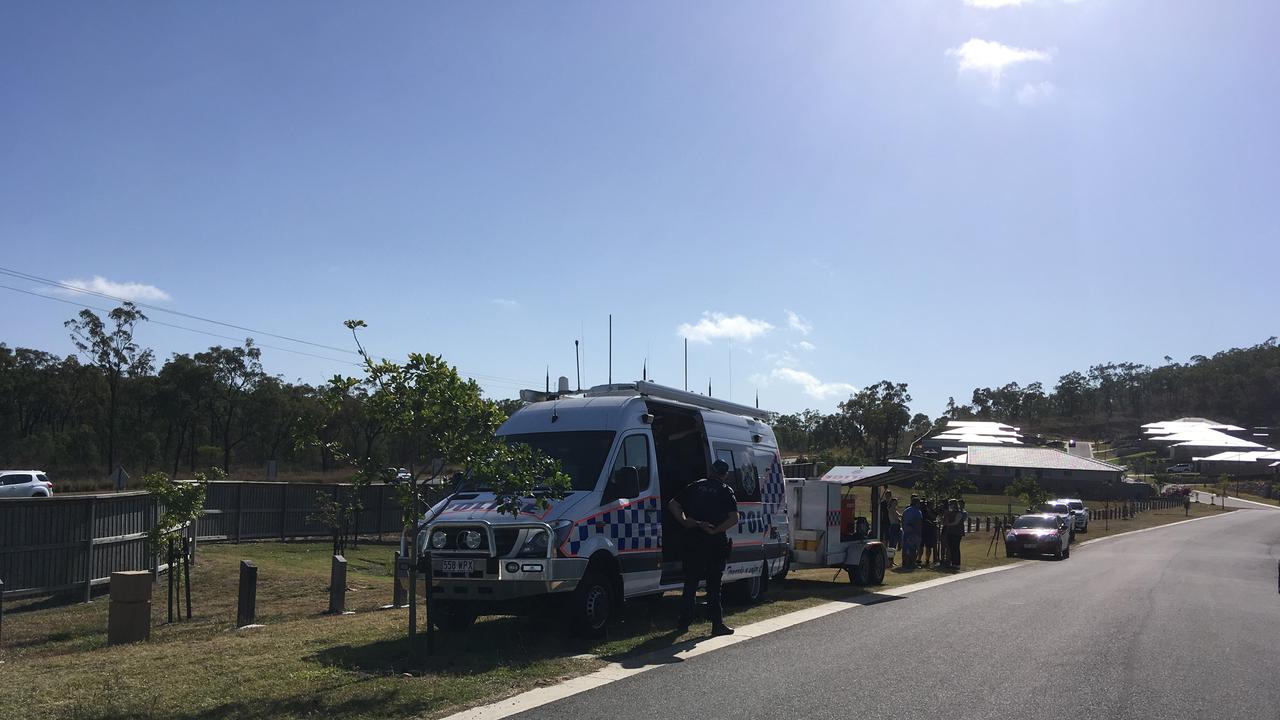
Mr Lewis was pacing side to side and threw a knife in Constable Dominick’s direction. Constable Dominick deployed his taser, but it missed Mr Lewis and hit the timber fence behind Mr Lewis.
Constable Ziemins-Hill drew his gun and pointed it at Mr Lewis and yelled “gun gun gun knife get on the ground”.
Mr Lewis did not get on the ground and had both arms up in a throwing motion and still had a knife with his arm raised above his head.
Constable Ziemins-Hill fired two shots causing Mr Lewis to fall to the ground.
Constable Ziemins-Hill said he was fearful of serious injury to him or his partner.
He immediately yelled that shots had been fired and told Mr Lewis to stay on the ground and not to move.
Constable Dominick walked over to Mr Lewis and kicked the knives away that were near his hands.
Mr Lewis was still alive at this point.
FIRST AID
Paramedics were called and the police officers began first aid treatment and rolled Mr Lewis into the recovery position.
Mr Lewis repeatedly said “just let me die, please just let me die” and shortly after, repeated he was not able to breathe.
Senior Constable Wynne-Jones yelled for someone to get a tactical first aid kit from the police vehicles.
The police officers repeatedly told Mr Lewis ‘‘we have stuff to fix you” and to stay awake.
The police officers took turns in in CPR for six minutes until paramedics arrived and continued to do so as instructed by paramedics.
Advanced Care Paramedic (ACP) Robert Peach described the police officers’ CPR as “effective”.
Critical Care Paramedic Matthew Hill and ACP Michael Dixon arrived and they began more treatment.
Mr Lewis was declared deceased at 8.12pm after 32 minutes of active resuscitation.
The time from when police arrived at the house to the shooting was about six minutes.
Mr Lewis was shot within one minute of his threats to police.
The police officers were separated and weapons were seized.
They were interviewed and the information provided largely matched the footage on the body-worn cameras.
AUTOPSY
An autopsy of Mr Lewis’ body was conducted on September 3, 2018 by Dr Nigel Buxton.
There were four major injuries on Mr Lewis’ body, a 10mm wound in his abdomen, a 22 x 10mm wound in the right chest, 10mm wound on his upper right arm with slight bruising and small amount of fat extruding a 45mm wound on the inner right arm with bruising.
He also had cuts on his fingers, believed to have been from glass, which would connect to the window he smashed.
A toxicology report determined Mr Lewis had a blood-alcohol reading of 0.153 per cent.
A sample of his blood showed Alcohol 174 mg/100 ml, Diazepam 0.20 mg/kg, Nordiazepam 0.14 mg/kg, Sertraline 0.16 mg/kg, Desmethyl Sertraline 0.27 mg/100kg and Tetrahydrocannabinol (THC) 0.017 mg/kg.
POLICE ETHICAL STANDARDS COMMAND
An investigation by the Queensland Police Service Ethical Standards Command into the circumstances leading to the death began the day after the death.
Constables Dominick and Ziemens-Hill did video walk-through re-enactments and neighbours were interviewed for statements.
Both officers were sworn into QPS in 2015 and were stationed at the North Rockhampton Police Station at the time of the incident.
They had completed training related to the taser, pistol and use of force the same month of the incident.
The police officers’ entry of the yard was authorised under the section 609 Police Powers and Responsibilities Act.
This section “authorises entry to a place if a police officer reasonably suspects there is an imminent risk of injury to a person or an offence involving damaging property, or domestic violence has occurred before the officer’s arrival”.
The investigation looked at the use of force by the police officers.
It was assessed that Constable Dominick drew his taser as a minimum force option but it failed.
Constable Ziemins-Hill drew his gun once he saw Mr Lewis was armed with knives and the taser had failed.
He yelled for Mr Lewis to drop the knives and fired his gun when Mr Lewis did not drop the knives and started to move forward.
According to Constable Ziemins-Hill, Mr Lewis was only five to six metres away from him and he believed there was no other option.
It was determined, if Mr Lewis had not been shot by the constable, he would have thrown another knife or attacked the police officers.di
The police officers also had little information about Mr Lewis’ intentions, whether he had self-harmed or what weapons he had.
There were also also issues in accessing information about Mr Lewis’ history and the police officers were not aware of his flags and warnings until they were already on scene.
The officers did state the knowledge would have been beneficial when they were en route but would not have changed their actions.
The police investigation concluded the use of the taser and lethal force was lawful, authorised and justified, given the imminent threat of grievous bodily harm and death posed by Mr Lewis.
THE INQUEST
Mr Lewis’ death was reported as a death in custody, as he died while he was trying to avoid being put into custody.
In those circumstances, an inquest was mandatory, with the primary purpose to inform the family and the public how the person died and what caused them to die.
It was noted in the Coroner’s report, the family of Mr Lewis had many questions about the circumstances of his death, the officers involved, the internal investigation and whether his death could have been avoided.
A pre-inquest hearing was held in August 2021 in Brisbane.
Oral evidence was heard from Senior Constable Grant Wynne-Jones, Constable Jack Ziemins-Hill, Constable Matt Dominick, Sergeant Jeffrey Brandt, Inspector Corey Allen, Chief Operational Skills Instructor and Detective Sergeant Christine Knapp.
The inquest was held at Gladstone on October 18 and 19 2021 and findings were delivered on January 18, 2022.
State Coroner Terry Ryan in his inquest findings stated the attending police officers engaged in ongoing risk assessments.
ENTERING THE BACKYARD
The decision to enter the backyard was heavily looked at.
The police officers knew Mr Lewis was the only person in the house, was possibly armed and was not an immediate threat to anyone but himself.
“The police action of entering the backyard may have escalated Mr Lewis’ level of aggression,” Mr Ryan said.
“On one view, as the incident was contained there was no need for police to enter the yard.”
It was submitted to the inquest, the decision to enter the yard was to conduct initial enquiries and to “get eyes on” Mr Lewis.
Constable Dominick stated he established the cordon in the backyard in an effort to isolate and contain the incident, and establish a line of communication with Mr Lewis.
“On balance, I agree with the submission of counsel assisting that the decision to enter the yard was reasonable in the circumstances,” Mr Ryan said.
“Both Constables understood that they were required to get “eyes on” Mr Lewis to ensure there was containment of the threat posed.
“Given the information that was known to police at the time about the events that had transpired shortly before they arrived at the scene coupled with the layout of the residence, including the fencing and adjoining properties, I am satisfied that this decision was consistent with police policies and procedure and was necessary given the unknown threat posed.”
The legal team representing Mr Lewis’ mother argued the communication technique in telling Mr Lewis to “come outside and put his hands up” resulted in an escalation of his behaviour as he responded directly to that challenge.
They argued this was contrasted with the communication style of Senior Constable Wynne-Jones, who was using Mr Lewis’ first name and checking on his welfare, to which Mr Lewis made no response.
It was submitted that the inference could be drawn that the challenge changed his behaviour.
Mr Lewis’ mother believed the conduct of the officers was “less than appropriate” and they should have proceeded with more caution, allowing for more time and space for the officers and to establish a broader cordon,
She further argued that the “entry to the backyard escalated the incident and there were opportunities to leave the backyard after the police had gained situational awareness”.
When the officers were in the backyard, Sergeant Brandt arrived and he became the lead officer on the scene.
He commented that the constables needed to be pulled out of the backyard; however within a minute, Mr Lewis came out of the house and confronted the two police officers.
Both constables stated by that time, it was not safe for them to retreat and the best outcome was to try and get cover.
Detective Sergeant Knapp who led the Ethical Standards Command investigation was asked at the inquest if police should have engaged negotiators or a medical professional.
She answered the incident evolved too quickly for those options to be explored.
“It is clear from the evidence that the incident transpired over a short period of time,” Mr Ryan said.
“Police were required to respond to a dynamic situation which escalated quickly because of the actions of Mr Lewis.
“Had the situation evolved into a prolonged siege it may have been possible to safely extract Constables Dominick and Ziemins-Hill.
“The reality was the situation was brought to a head by Mr Lewis.”
Mr Ryan accepted the evidence from the constables that it was not safe to retreat over the front gates, particularly after Mr Lewis indicated he was in possession of a firearm.
“I also accept that the structure of the backyard and the height of the fencing did not allow for an effective cordon to be established with the Constables located in adjoining properties as opposed to inside the perimeter,” Mr Ryan said.
“There was initially an insufficient number of officers for an effective cordon to be established outside the fence line.”
Mr Ryan stated it was unlikely the presence of the police officers in the backyard would have changed the outcome.
“Mr Lewis elected to arm himself with knives and confront the police officers which led to the application of fatal force,” he said.
“It is possible, considering his earlier statements to Ms McIntyre and subsequent request that police officers let him die, that he had little regard for his own well-being at that time.”
USE OF FORCE AND LETHAL WEAPONS
Assessing the use of force and lethal weapons, Mr Ryan said the police officers gave Mr Lewis multiple warnings to drop the knife and get on the ground and in the circumstances, it was reasonable for Constable Ziemins-Hill to form the belief he or Constable Dominick would have suffered serious injury or death if Mr Lewis was not shot.
Mr Ryan agreed the use of the taser was appropriate in the circumstances.
Mr Ryan made reference to Mr Lewis’s “deteriorating” mental health in the lead up to his death.
“He was prescribed medication just three days before his death,” Mr Ryan said.
“He was advised to return for assistance from the Alcohol and Other Drugs Service the day before he died.
“Mr Lewis was aware that his drug and alcohol consumption triggered negative behaviours. This was evident from his previous help seeking after consuming drugs.
“Unfortunately, Mr Lewis did not seek help in the hours prior to his death.
“Instead, he had been drinking during that time.”
Mr Ryan considered the lack of the resuscitation mask in the first aid kit but it was noted this was a rare occurrence and Senior Constable Wynne-Jones was still able to perform effective resuscitation.
His mother also believed his mental health issues were not considered enough, given the lack of reference to the flags related to Mr Lewis’ mental health history, and that the triple zero calls indicated Mr Lewis was suicidal, agitated and may have been experiencing mental health issues.
The sufficiency of the training of the police officers was also discussed at the inquest and Mr Lewis’ mother argued the officers should have had more in depth face to face training on mental health issues.
Mr Ryan declared he was “satisfied that the training given to police officers with respect to the situational use of force model, armed offenders, threat and risk assessments, as well as incident command and dealing with those in mental health crisis is sufficient to ensure that officers are trained effectively to respond to dynamic and challenging incidents such as that confronted on the night of Mr Lewis’ death”.
Mr Ryan acknowledged the Ethical Standards Command investigation and stated it was “thoroughly and professionally investigated by Detective Sergeant Knapp”.
CONCLUSION OF INQUEST
The inquest was finalised with a summary of events.
“Mr Lewis had a significant history of addiction to alcohol and other substances which had affected his mental health, as did an acquired brain injury,” the findings read.
“On the day of his death, he had assaulted his partner and her son at his partner’s home, where he had been living for several months.
“Police officers were called to attend the incident following a 000 call.
“The first police crew arrived at the property at around 7.20pm on 31 August 2018.
“Mr Lewis refused to come out of the property.
“After two police officers went into the backyard of the property, he informed officers that he had a shotgun.
“Soon after, Mr Lewis came out of a side door armed with three knives.
“He threw one of the knives at a police officer.
“Mr Lewis repeatedly ignored calls from police to drop the knives.
“An attempt to immobilise him with a taser was unsuccessful.
“After Mr Lewis was poised to throw another knife at the police officers and came within 5-6 metres of them, he was shot by a police officer acting in the course of his duties.”
The inquest was to look at whether any preventative changes to procedures or policies could reduce the likelihood of deaths in similar circumstances.
No recommendations were handed down.
Mr Ryan extended his condolences to Mr Lewis’ mother, siblings and children.
“It was clear from the statement that his mother read at the conclusion of the inquest that he was deeply loved, and the family share many positive memories of their times with him.”
Daniel Patrick Lewis died on August 31, 2018, at Geoff Wilson Drive, Norman Gardens, Queensland with the cause of death determined as gunshot wounds to the chest and abdomen.
More Coverage
Originally published as Daniel Patrick Lewis, 36, inquest: Why he was shot by police at Rockhampton home




